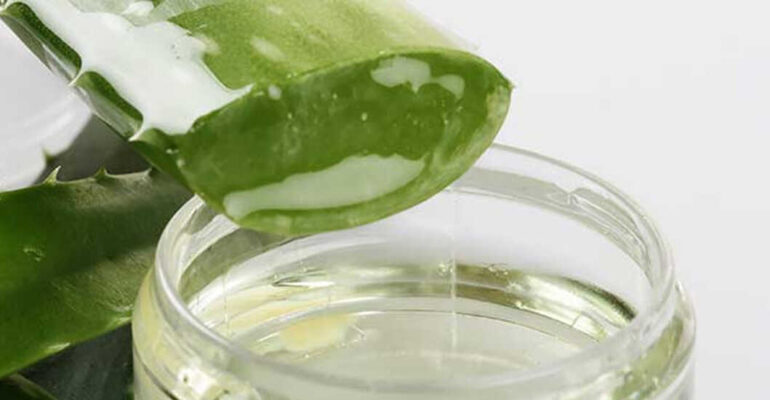The Ultimate Guide to Dermatologist-Approved Aloe Vera Gel
August 19, 2021 2024-02-15 12:46The Ultimate Guide to Dermatologist-Approved Aloe Vera Gel
As an Amazon associate, Dermatocare earns from valid purchase made by clicking on the affiliate links in this blog.

The Ultimate Guide to Dermatologist-Approved Aloe Vera Gel
Are you in search of a dermatologist-endorsed Aloe Vera gel? As a practicing dermatologist, I personally favor using aloe vera gel for both my patients and myself. Wondering why? Aloe vera stands out as one of the most powerful herbs for skin repair, boasting a rich composition of:
- Minerals (zinc, magnesium, and selenium)
- Enzymes (catalase and superoxide dismutase)
- Amino acids (cysteine, anthraquinones)
- Vitamins (B2, B6, E, and C).
While homemade aloe vera extraction is optimal, it tends to spoil without refrigeration. Consequently, our dermatocare team meticulously examined the ingredient lists of prevalent aloe vera gel brands available in India, and the United States.
Unfortunately, numerous renowned brands incorporate chemical components such as harmful preservatives, colors, thickeners, or additives. Surely, you wouldn’t want to unknowingly apply chemicals to your skin under the guise of a natural product.
DERMATOLOGISTS RECOMMENDED ALOE VERA GEL IN INDIA
Most popular aloe vera gel brands in India use acrylate as a thickener and have Parabens as preservatives. We are listing only three brands that fulfill all the above criteria of dermatologist-recommended aloe vera gel.
WOW Aloe Vera Gel
Wow aloe vera gel is 99% pure aloe vera gel with Xanthan gum as a thickening agent, and Potassium sorbate as a preservative. It is tinted flip-open bottle packing protects the aloe vera gel from air and sunlight exposure.
Mamaearth Aloe Vera Gel
Mamaearth brand also is 99% pure aloe vera gel with Xanthan gum as a thickening agent, and Potassium sorbate as a preservative. In addition, it has glycerine, Vitamin E, allantoin, and Sodium PCA as hydrating and soothing ingredients. Pump packing protects gel from air exposure. However, it has IFRA-certified allergen-free fragrances.
Mamaearth Aloe Turmeric Gel
This is the second variant of Mama Earth aloe vera gel. It has turmeric in addition to all the benefits listed in the above variant of this gel. This can be used for acne-prone skin.
DERMATOLOGISTS RECOMMENDED ALOE VERA GEL IN THE UNITED STATES
Interestingly, popular aloe vera gel brands contain carbomer as a thickener, formaldehyde releasers as preservatives, and chemical additives. We have listed only those brands that display the complete ingredient list and fulfill our criteria.
Seven Minerals aloe vera gel
Available online @ Amazon.com
Seven Minerals tops our list because it is the only brand with seaweed as a thickening agent. Seaweed has anti-aging and anti-inflammatory benefits. All other brands use Xanthum gum as the thickening agent. Like other brands listed below, it is 99% pure aloe vera gel. Potassium sorbate is a preservative. Tinted flip-open bottle packing preserves the potency of aloe vera.
INGREDIENT LIST: USA Grown Organic Aloe Vera, Agar (natural thickener), Citric acid (to stabilize pH), Ascorbic acid (Vitamin C), Potassium sorbate (for 2-year shelf life). Does NOT contain CARRAGEENAN.
The rest of the brands listed below have the following standard features:
- 99.75% aloe vera gel
- Xanthan gum is the thickening agent.
- Potassium sorbate as a safe preservative
- Has tinted packing
Earth’s Daughter
Available online @Amazon.com
INGREDIENT LIST: Certified Organic Aloe Vera (99.75%), Citric Acid (preservative), Ascorbic Acid (Vitamin C), Potassium Sorbate (preservative), Xanthan (plant-based thickener)
Green Leaf Naturals
Available online @Amazon.com
INGREDIENT LIST: Cold-Pressed Organic Aloe Vera (99.75%), Citric Acid, Ascorbic Acid, Potassium Sorbate, Xanthan
Amara Organic
Available online @ Amazon.com
INGREDIENT LIST: Organic Aloe Vera (99.75%), Citric Acid, Potassium Sorbate, Ascorbic Acid, and Xanthan.
How to find organic aloe vera gel?
Achieving 100% purity is impractical
When purchasing aloe vera gel, the crucial aspect to scrutinize is “the ingredient list.” Avoid products labeled as “100% pure aloe vera gel” as genuine purity at this level is unattainable. Aloe vera gel extracted from the plant possesses a thin consistency and necessitates preservatives for stability during packaging, storage, and transportation.
Opt for Natural Thickeners like Xanthan Gum or Seaweed
Various thickeners are employed in the production of aloe vera gel:
- Carbomer (Safe, but synthetic): Commonly used in the majority of aloe vera gels, carbomer serves as a synthetic thickener.
- Xanthan gum (Safer, Natural): Derived naturally, xanthan gum is an effective thickening agent typically used at concentrations below 1%. Genuine aloe vera gel often indicates “99%” on the packaging instead of claiming 100%.
- Seaweed (Safest, Natural, and Anti-aging): Apart from thickening aloe vera juice, seaweed offers anti-aging and anti-inflammatory benefits.
Opt for Safe Preservatives like Potassium Sorbate
Aloe vera tends to spoil without preservatives. Choose preservatives wisely, steering clear of substances like parabens and formaldehyde releasers. Opt for safer alternatives like TLC, potassium sorbate, malic acid, etc.
Transparency Matters
Avoid aloe vera gel with added colorants. If the gel appears green and lacks transparency, it’s best to avoid purchasing it.
Embrace Fragrance-Free Options
Steer clear of aloe vera gels with a floral scent, indicating the presence of synthetic perfumes. Authentic aloe vera gel possesses a mild, natural fragrance even without additional scents.
Say No to Open-Jar Packaging
Aloe vera gel undergoes oxidation when exposed to air. Favor packaging with the following specifications:
- Air-tight packing: Opt for flip-open bottles, tubes, or pump packaging to shield aloe vera from exposure to air. Avoid open jar packaging as it increases the likelihood of contamination when digging fingers into the gel.
- Tinted or opaque bottles are preferable to transparent ones.
- Glass packing is superior to plastic to prevent the entry of chemicals from plastic, especially when the gel is subjected to heat during transportation or storage.
ROUTINE FINDER
Get free dermatologist-recommended regime by choosing your skin or concerns.

FACE

HAIRS

CHILD

BODY







